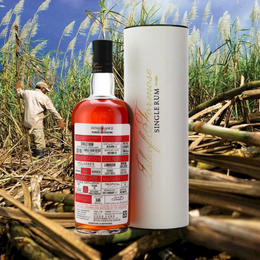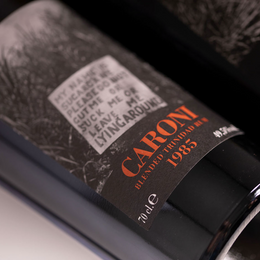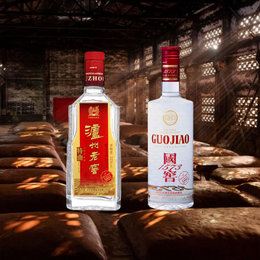Distillery Spotlight: Kanosuke Distillery
REGION: Kagoshima Prefecture, Japan
Note: Our Distillery Spotlight articles discuss how each distillery's unique process results in the distinctive flavour profiles of their whisky. To find out more about each step of the whisky-making process, check out our Basics Series article on how to distil the elixir of life.

Kanosuke Distillery is located along the Fukiagehama Beach on the West Coast of Kagoshima, a picturesque oceanic view awaits visitors to the distillery. (Image Source: Tabitto)
An easy way to grasp the ins and outs of any country you’re looking to immerse yourself into, is to look out for what’s unique about the county. It could be the weather, the culture, maybe the way people communicate, but sometimes those intangibles can be alittle too amorphous to catch if you’ve got just a couple of days to enjoy the place.

Pop into a local eatery and ask for a local drink - my best advice to getting to know a place if you're on a tight schedule. (Image Source: GaijinPot Blog)
Here’s an easy way that I recommend, just head over to your nearest convenience store or corner store and pick out a drink you’ve never seen before. It shouldn’t be too hard; chances are if you eliminate the Coca-cola’s, the Heineken’s, the Redbull’s and the juices, you’re probably about there. Alternatively, when you’re popping in to a restaurant or a place to eat, just ask for the house special or a serving of the local drink.
Japan as a country has no shortfall of local specialties where it comes to beverages. From the globally ubiquitous Matcha, or the fragrant Sake, there’s plenty to choose from, and learn about. But one local specialty you may be less familiar with is Shochu.

Shochu is a local Japanese spirit that is the rougher, more liberal sibling of Sake. (Image Source: Favy)
Shochu is an alcoholic beverage distilled from rice, barley, sweet potatoes, buckwheat (or soba) and brown sugar. Sometimes it is even made from chestnut, sesame seeds and even carrots. A fairly liberally made beverage compared to the likes of whisky, which is predominantly made of barley and to some extent grains and rye.

Shochu can be made from a wide variety of ingredients resulting in starkly different flavors. They are often made with local ingredients and hence various prefectures have their own specialty Shochu. (Image Source: Mutual Trading)
Shochu comes in at around 25% abv, hence it is much weaker than whisky, at between 40% and 55%. It tastes less fruity than its more popular cousin, Sake, and is more nutty, earthy and umami in flavor. Read more about Shochu here.
The reason Shochu has secured its spot in the introduction of this WhiskyDex is because it finds itself at the heart of Komasa Jyozo, a multi-generational family-run Shochu maker based in Kagoshima Prefecture, Japan, which has recently pivoted to whisky making – hence the birth of Kanosuke Distillery.
From Shochu to Whisky - A Little Background of Komasa Jyozo

Komasa Jyozo Co. was founded in Kagoshima in 1883 by Komasa Ichisuke to produce Shochu. At the time, Ichisuke produced Shochu that was primarily used at local shrines. Komasa Jyozo’s Shochu was handcrafted in small batches and distribution was fairly limited to the nearby localities.
In 1957, Komasa Jyozo had a breakthrough – the use of oak cask aging to produce the first ever oak cask aged Shochu. This became the company’s most popular brand, Kozuru, based on the product Mellowed Kozuru, a 6 year old Shochu. This formative milestone can be attributed to Kanosuke Komasa, of whom Kanosuke Distillery is named after.

Kanosuke was inspired to create the Mellowed Kozuru as at the time, Shochu was viewed as a cheap, flavorless drink. Upon studying Western liquor-making techniques, Kanosuke had realised the huge influence oak cask aging could have on spirits. In a way, Shochu wasn’t too far off from the new make that only becomes whisky upon aging. Needless to say, Mellowed Kozuru went on to bag numerous spirits awards and became the most popular Shochu in Japan.
As generations went on, Komasa Jyozo came to be run by fourth-generation president Yoshitsugu Komasa. It was under Yoshitsugu that the company ventured yet again into newfound territory, with the establishment of Kanosuke Distillery in 2017. This was not simply a passion project for Yoshitsugu, but was in fact motivated by his early experiences as a salesman for Komasa Jyozo, where he found it difficult to market Shochu outside of Japan.

Fourth-generation Yoshitsugu aims to bring Shochu to the world by distilling spirits that fit a broader appeal as a foot in the door. (Image Source: Today)
It became apparent to him that foreigners did not have a taste for the spirit and in order for Komasa Jyozo to broaden its appeal, it would have to “speak the same language”. He landed on whisky as his foot in the global door, as the amber spirit had a far broader appeal and was widely appreciated by drinkers of all tongues.
His goal? To eventually bring consumers back to the heart of Komasa Jyozo – Shochu.
Of course Yoshitsugu did not jump in completely blind, the fourth-generation president had spent time working in Scottish and American distilleries, having learnt the practice of whiskymaking. It probably also helps that Yoshitsugu holds a master’s degree in fermentation science from the Tokyo University of Agriculture.

Since then the company has even ventured into craft gin, with three key flavors – Sakurajima Komikan (Kagoshima Mandarin Oranges), Hojicha (Roasted Green Tea) and Ichigo (Kagoshima Strawberries), selected to reflect the regional Kagoshima specialties. Certainly, Komasa Jyozo has weaved its DNA even in its gin, using rice Shochu as the base for its craft gins.
The Howling of Fukiagehama

Kanosuke is boasts a gorgeous oceanic view facing the East China Sea. (Image Source: Tojo)
Being situated in Kagoshima, Kanosuke Distillery finds itself in Japan’s longest sand beach, an area called Fukiagehama, which cuts through three municipalities. It is a beautiful, white strip that stretches as far as the eye can see, and faces the East China Sea.

The area got its name because during the winter, strong howling inland winds consume the beach and in the process pick up sand which when combined with the surface of the water, creates bountiful sea sprays. This phenomenon is created by the temperature differentials between the warmer Kagoshima inlands and the colder East China Seas.

As Kanosuke Distillery faces the pristine blue ocean, the distillery’s warehouses are ventilated with plenty of sea spray, which comes through in the flavors of its whiskies.
Due to temperature differentials and a windy environment, the dynamic climate is primed for an accelerated maturation as casks are able to “breathe” more and hence age faster.

The area is also blessed with an abundance of crystal-clear groundwater that is filtered and purified as it runs down the nearby Shirasu Plateau, making for quality whisky.
As we’ve explored several Ji-whisky distilleries (Chichibu and Shizuoka), we again see how important it is for craft distilleries to showcase their regional distinctiveness through their whiskies. Often it is a combination of distiller and climate. The distiller combines their stories and experiences with what the local geography has to offer, producing some pretty unique whiskies and some very happy fans.
Blending in Komasa Jyozo’s Character
When you’ve been in the spirits business for as long as four generations, you’re bound to have some ideas about how to make a good drink.
For one, where there’s Komasa Jyozo, you’ll also find Shochu, or at least something of Shochu origin. With Kanosuke’s whiskies, this will come in the form of Shochu casks that will be used for maturation, which will also happen in Shochu warehouses.

Look closely and you'll notice each pot still's lyne arms (the long slim horizontal part of the pot still) are all pointing at different angles, which will have a big part to play in determining the style of whisky produced.
They’re confidence and dedication in making some pretty innovative spirits has also led them to acquire three different pot stills rather than two that most craft distilleries have. Each of the stills has a different shape, with both ascending and descending lyne arms, allowing them to produce a mix of heavier and lighter, fruitier whiskies.
They’ve even begun distilling their own grain whiskies (one of only two craft distilleries doing so) rather than using imported whiskies. Grain whiskies are key to creating smooth, harmonious blends, but are difficult to do for craft distilleries that have limited distilling capacity.

Kanosuke's grain whiskies are produced the same site as Komasa's Shochu.
However, Komasa Jyozo is in a unique position as they are able to use their existing Hioki Distillery site, which is where they have been producing their Shochu and gin. Again, Shochu will play a hand in this as the grain whiskies will be distilled using stainless steel Shochu pot stills.
This expanded distilling capacity will allow them to create a wider variety of styles of whiskies, from a range of single malts to blends. You can tell they mean business.
Tasting Kanosuke’s Whiskies
In mid-2021, Kanosuke released its inaugural single malt, descriptively named “Kanosuke Single Malt 2021 First Edition”, much to the excitement of fans and followers of the Ji-whisky revival. Kanosuke’s motto is “Mellow Land, Mellow Whisky”, which as you can probably guess, hails from their Shochu heritage.

The anticipation for Kanosuke’s whiskies has been building up even since 2018, when Kanosuke released its first new make, again aptly named “Kanosuke New Born”. The New Born series has followed through from 2018 till 2020.
New makes are always great because the allow whisky enthusiasts to follow along on the distillery’s journey to producing its own bona fide whiskies and to taste how the malt evolves with age or is influenced by different distilling practices and experimentation.

The ocean in the front.
Going into their expressions, the four themes here to note are:
- The oceanic/sea spray influence on the whisky’s flavors, which would likely show more sea salt with more aged expressions.
- The impact of the local climate that should accelerate maturation. This should show as more depth of flavors and more rounded taste and texture.
- Use of ex-Shochu casks, specifically Komeshochu (rice Shochu). Komeshochu is a particularly strong and flavorful type of Shochu but its ultimate flavors depend on the type of rice. Given that these Shochu casks held Mellowed Kozuru Shochu, we can make a fairly informed guess to say that we can expect some malty flavors, vanilla, earthy characters and a likely thicker, oilier texture.
- Three unique pot stills (and their own grain whisky) resulting in a variety of flavors and textures, and more harmonious blends. The three pot stills have different structures resulting in different styles and flavors, from rich and robust to fruity and lighter whiskies.

The beautiful Kagoshima terrain to the back.
Now let’s get into it!
Kanosuke New Born (2018)
The first New Born (2018) was distilled and barreled in February 2018, using non-peated malt from the UK. It was then distilled first in a wash still and then had a second distillation in a spirit still to create more body. It was then barreled in re-charred American white oak casks that previously held maturing Komasa Jyozo barrel-aged rice Shochu, their famous Mellow Kozuru label. It was then stored for 8 months in Kanosuke’s sea breezy strorehouses and then bottled at 8 months old.

Kanosuke New Born (2019)
The second release of Kanosuke’s New Born (2019) is characterized by “sea breeze-scented New Born, intensified” and was barreled in bourbon casks for 16 months before being bottled at cask strength.
Ironic given their motto “mellow whisky”. But jokes aside, we talked about how Kanosuke Distillery is uniquely positioned facing the sea and hence the ocean climate is bound to shape the character of its whiskies, though that may require a longer period of aging before it becomes apparent.

Kanosuke New Born (2020)
The third release was a peated version of Kanosuke’s new make, made using UK peated malt but followed the same process as the previous new make, with two distillations. This was matured in white oak barrels and aged for 24 months being bottled at cask strength.

And finally, the moment everyone’s been waiting for…
Single Malt Kanosuke 2021 First Edition
The inaugural Kanosuke whisky was made using unpeated malt and distilled via all three pot stills. It was then aged in a variety of oak barrels including their special re-charred American white oak ex-“Mellowed Kozuru” aged Shochu casks, blended together after 3 years of maturation at 58% abv.

Our Take
If you’ve followed us for awhile you’ll know we’re big fans of the Ji-whisky revival and it’s just exciting that we get to taste the regional specialties and the local uniqueness, be it climate or what the craftsmen behind the distillery is perhaps better known for, – we’re certainly all for it.

It’s a massive effort to get these whiskies out the door and the amount of craftsmenship and care and attention to detail – it’s just a lot of heart and we’re thankful we get to taste the fruits of their labor.
With Kanosuke Distillery, we do believe they are one of the major contenders to look out for given their unique backstory and it’ll be interesting to see the mix of influences, from Shochu being weaved into them, to how the Fukiagehama will shape the whiskies; it’s an eclectic mix for sure.

Early reviews have been fairly positive and their flavors are one that is quite unique amongst Japanese whiskies, given that most of the whiskies produced in Japan (of course a generalization) tend to focus on fruitier, lighter whiskies that are more fragrant. Even specific to Ji-whiskies, they seem to be trending towards really robust, intense flavors. Yet Kanosuke seems to be going in the opposite direction, focusing on producing “Mellow Whisky” that appears to take on earthier, deeper flavors that may not be as intense but are expected to be richer with more body.

(Image Source: @kanosukedistillery & @penmagazine)
In a way, we think Kanosuke will help to expand the landscape of Japanese whiskies in helping build out the wave of Ji-whisky, but will also stretch the palate spectrum in introducing more differentiated flavors.
This serves to again highlight the excitement around Ji-whiskies, as they are so different each and every one of them; it is almost like getting to know new people, each with their own unique mix of backstory, local uniqueness and regional specialties.
What a time to be alive!
Kanpai!

@111hotpot





